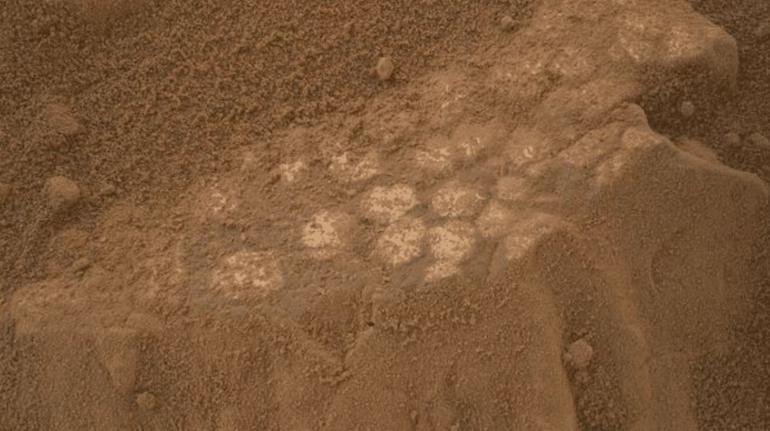
NASA’s Curiosity Rover Spots Dinosaur Egg-Like Rocks on Mars
NASA’s Curiosity rover has made a groundbreaking discovery on Mars, uncovering rock formations that bear a striking resemblance to fossilized dinosaur eggs. The find, which has sent shockwaves through the scientific community, has raised intriguing questions about the possibility of ancient Martian life.
The discovery was made at a location known as The Boxworks, a geological wonder that has been a focus of study for NASA scientists. According to researchers, the rocks could contain valuable records of ancient Martian water flow, which could provide crucial insights into the planet’s past habitability.
The Curiosity rover, which has been exploring Mars since 2012, has been equipped with advanced imaging tools that have allowed scientists to study the rocks in unprecedented detail. While drilling is not possible in this area, the rover’s cameras and spectrometers have been able to analyze the rocks’ composition and structure.
The rock formations, which resemble dinosaur eggs in size and shape, are believed to be around 3.5 billion years old. This raises the possibility that they could have been formed during a time when Mars was still a wet and habitable planet, and could provide valuable clues about the planet’s history.
“This is a very exciting discovery,” said Dr. Ashwin Vasavada, the Curiosity rover’s project scientist. “The rocks we’ve found are unlike anything we’ve seen before on Mars, and we’re eager to learn more about them.”
The discovery has significant implications for our understanding of Mars’ past and the possibility of life on the Red Planet. If the rocks do contain records of ancient Martian water flow, it could provide evidence of a habitable environment that existed on Mars in the distant past.
The Curiosity rover will continue to study the rocks at The Boxworks, using its advanced imaging tools to gather more information about their composition and structure. The rover will then move on to its next destination, a region known as Kukenán, where it will continue to explore the Martian surface.
The discovery of dinosaur egg-like rocks on Mars is a reminder of the vast mysteries that still remain to be uncovered on the Red Planet. As scientists continue to study the rocks and gather more data, it’s possible that we’ll learn even more about Mars’ history and the possibility of life on the planet.
Source:






